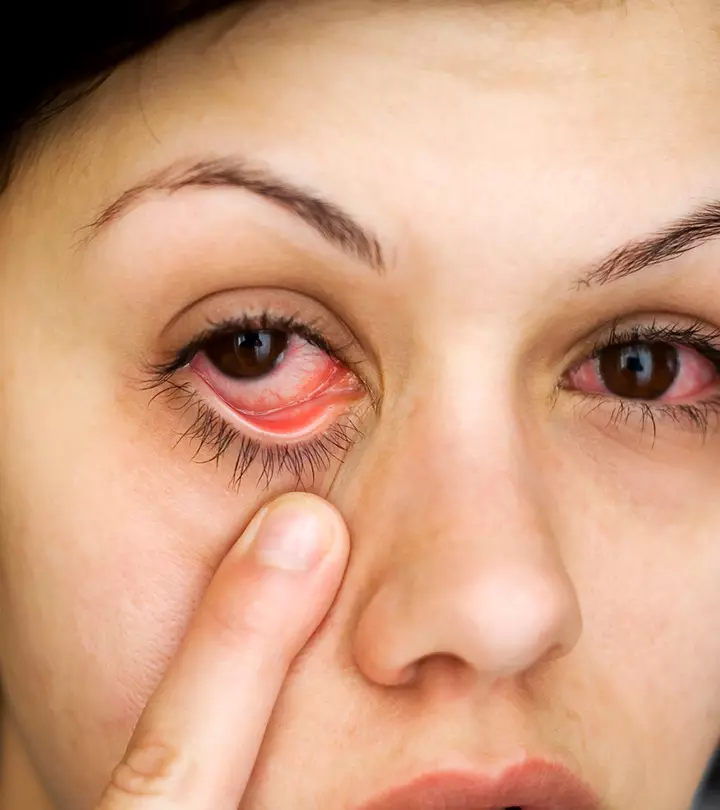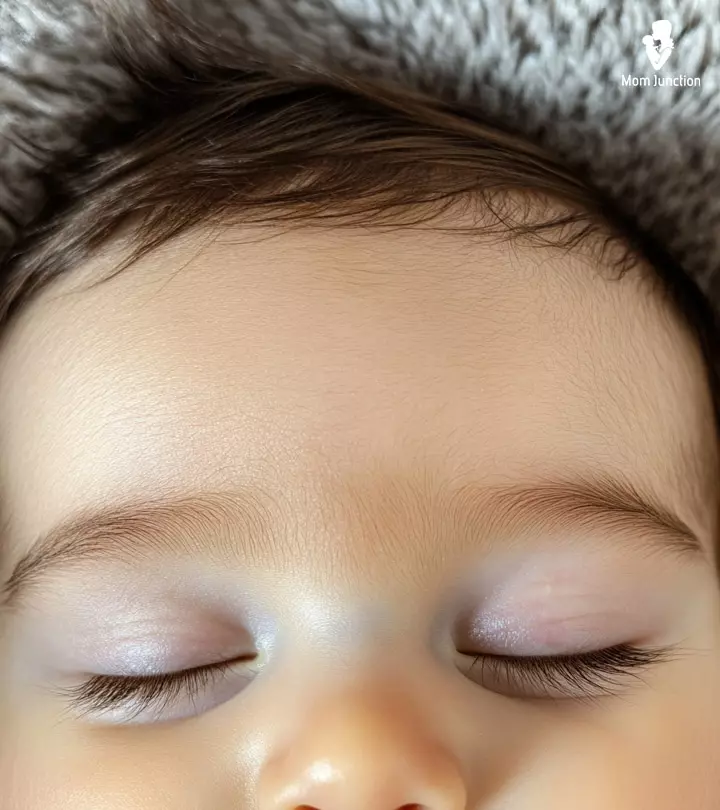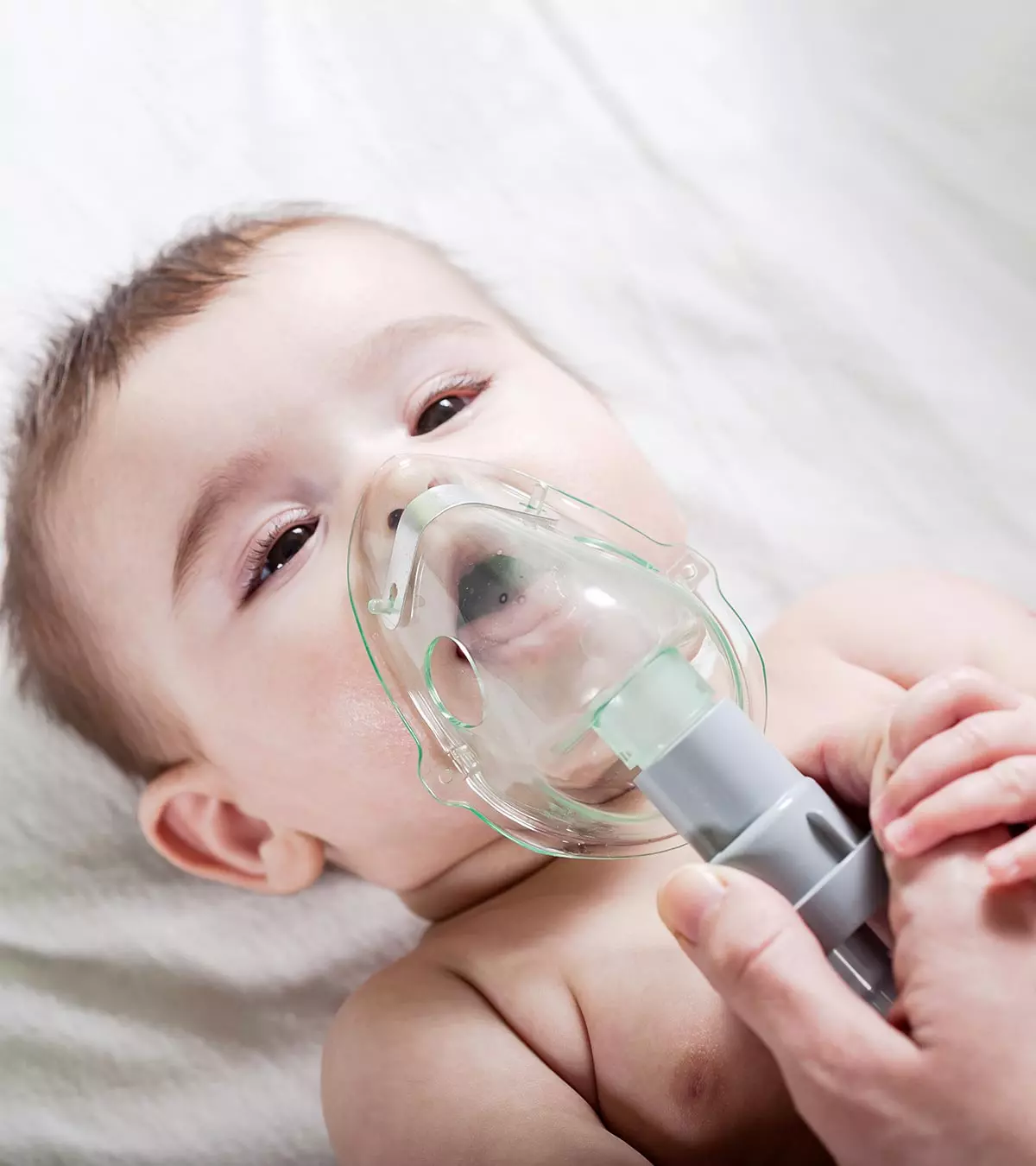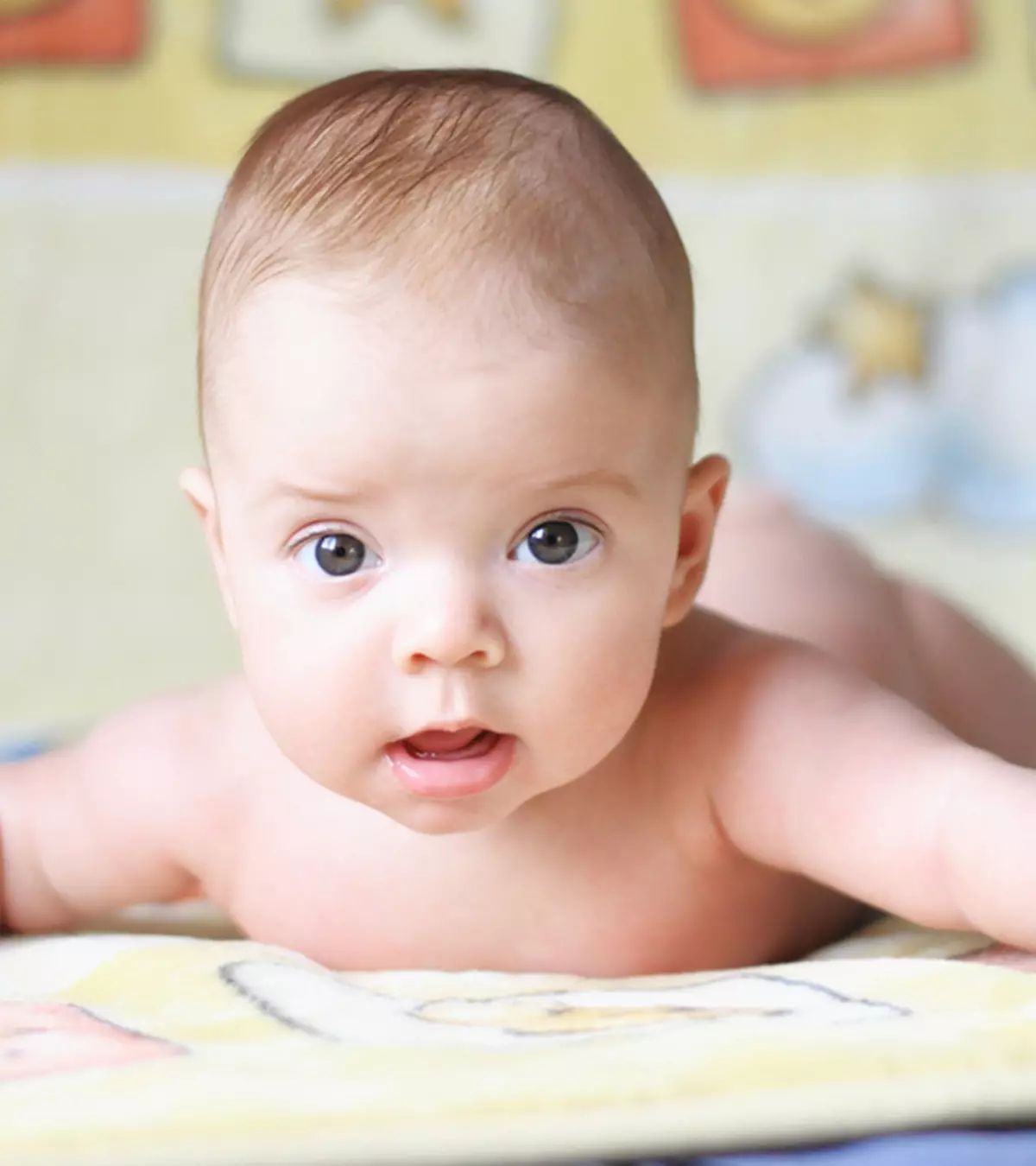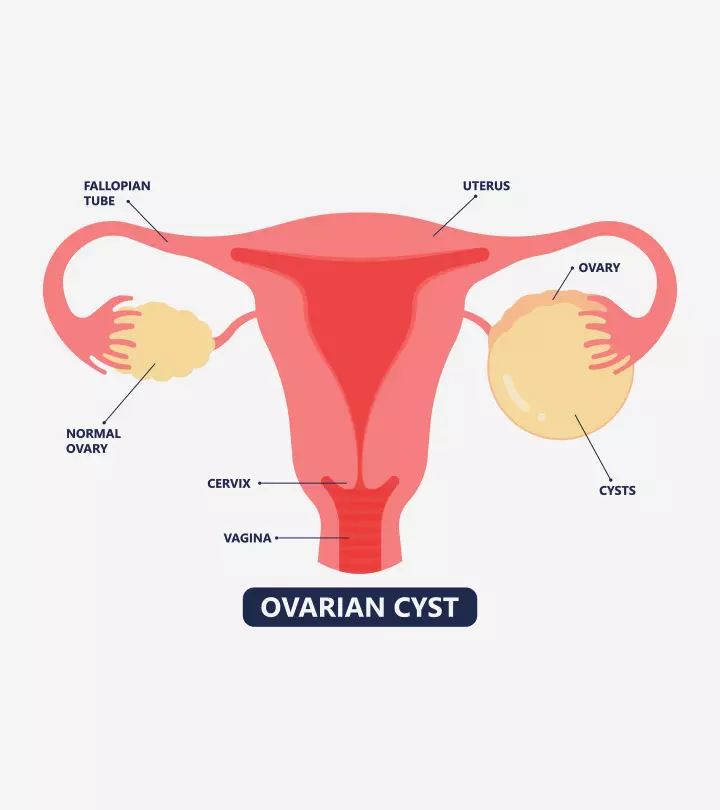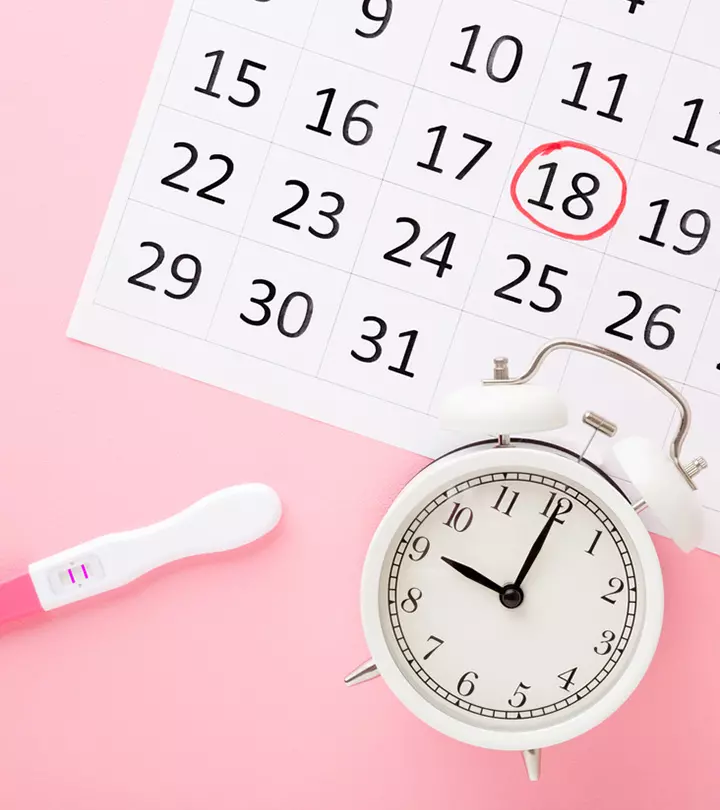
Image: iStock
Ovulation occurs when the ovaries release the mature ovum (egg) during the menstrual cycle. Women planning to conceive may wonder — how long does ovulation last? The ovulation usually occurs on the 14th day of a 28-day menstrual cycle and lasts for a day. It is roughly around the middle of a monthly period. Nevertheless, the time may differ from one woman to another. If the mature egg is not fertilized, it is released with menses. Knowing the duration of ovulation may help you plan conception better and increase the likelihood of becoming pregnant (1).

Read this post to discover how many days ovulation lasts, effective ways to track it, and valuable information about the fertility window. Understanding the duration of ovulation and identifying your fertile days is crucial for increasing your chances of conception.
Key Pointers
- The ovum or egg is viable for 12 to 24 hours after ovulation, and it dies if the fertilization does not occur within this time frame.
- You may track ovulation based on calendar methods, tracking signs such as basal body temperature or cervical mucus changes, and using home ovulation test kits to find the right time to conceive.
How Long Do Eggs Live After Ovulation?
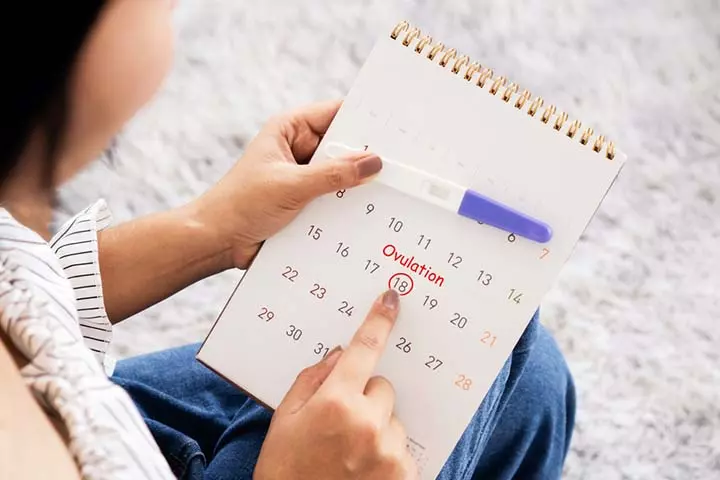
Once the ovum (egg) is released from the ovary (ovulation), it may live about 12 to 24 hours (2). Usually, an egg may die within this time if sperm doesn’t fertilize it. This may further change the hormones and result in menstruation.
If the fertilization occurs, the egg and sperm join, forming the zygote that divides and attaches to the uterine wall and forms the embryo.
How Long Does It Take To Get Pregnant After Ovulation?
A woman can become pregnant up to 12 to 24 hours after ovulation. The egg is nonviable (dies) after this time frame. The highest pregnancy rate is when a sperm and egg fertilize within four to six hours of ovulation (3). However, this does not mean that you will only become pregnant if you have unprotected sexual intercourse on the day of ovulation because the sperm is viable (lives) up to five days in the female reproductive system (4).
How To Determine The Right Time To Have Sex To Conceive?
Pregnancy is possible if you have sex during the fertile window. Five days before ovulation and the day of ovulation are fertile days. However, the three days before ovulation and the day of ovulation are considered the most fertile days in a cycle. This is the best time to get pregnant as the chances of conceiving are high if you have unprotected sexual intercourse during this time (5).
 Quick fact
Quick factThe chances of getting pregnant are almost none if you have sex before or after the fertile window. However, it is best recommended to rely on other methods of contraception (birth control methods) if you are not planning for pregnancy. A woman cannot get pregnant during the menstrual cycle since the egg is not present in the fallopian tube.
How To Track Ovulation To Find Your Fertile Window?

Tracking ovulation timing can predict the right time for women to have intercourse to improve their chances of becoming pregnant. Knowing the menstrual cycle can help you determine ovulation days. You may track menstrual cycles in a diary, special charts, a period-tracker app, or a period calculator on your smartphone. . The first day of menstruation (start bleeding) is day one of a cycle and the last day is the day before the next period.
 Point to consider
Point to considerYou may calculate ovulation day by using the menstrual cycle length. The menstrual cycle length may vary between 23 and 35 days, with an average of 28 days. Subtracting 14 days from your menstrual cycle length gives you the ovulation day (6).
The ovulation day helps determine the fertile window. However, this may not be useful for women with irregular menstrual cycles. They may use other methods to track ovulation.
You may use the MomJunction ovulation calculator to know the ovulation day and the fertile window. This calculator helps you find out the ovulation day and fertile days based on your cycle. The accuracy of the calculator may vary since it depends on averages. However, calculators give you an idea about ovulation time, and you may look for ovulatory signs during this time.
Other Ways To Gauge Your Ovulation
You may use various methods to determine ovulation other than a calculator. These methods are reliable for women with irregular periods as well. These tests may help understand the most fertile days of your cycle to increase the chances of pregnancy (7):
- Urine test kits: Ovulation can also be determined by easy-to-use kits. These kits are available online and in stores, and this involves urine test strips that change color during ovulation. Luteinizing hormones cause these color changes. The accuracy of the test may depend on the products, and you may try various strips to find the most accurate one for you (8).
- Blood and urine tests: Blood tests help determine estradiol hormone levels produced by mature follicles. A rise in LH levels in the blood indicates that the follicle is ready to release an ovum. However, LH surge is often not found in a single urine or blood test since this hormone is released in short bursts. Increased progesterone levels in the blood a week before menstruation indicate that ovulation has already taken place.
- Transvaginal ultrasound: The follicle, fluid-filled sac with ovum can be visible on ultrasound imaging. Follicular growth in the images helps identify the peak moment to trigger the ovulation in assisted reproductive therapies, confirm that an egg is ready to ovulate, and confirm that it happened.
- Basal body temperature (BBT) chart: Daily BBT measures help you understand the temperature changes during fertile days. The rise of the temperature means that a progestin secretion happened following ovulation. This method is accurate to confirm the ovulation but not to monitor it.
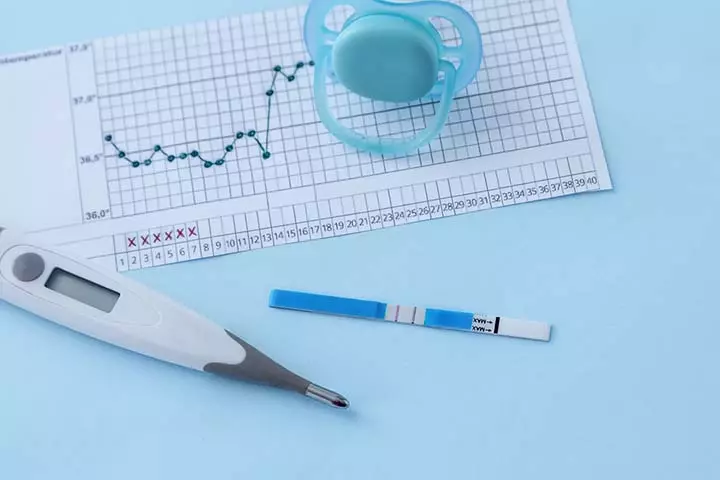
Although these measurements can identify when you have more chances to get pregnant, experts do not recommend them to plan contraception since there can be slight variations. Instead, you may always rely on the most effective contraception to prevent pregnancy.
What Are The Signs Of Ovulation?
Looking for ovulation signs during the expected ovulation days could help a woman track ovulation. They may experience all or some of the undermentioned ovulation symptoms (9) (10):
- Cervical mucus changes
- One-sided lower abdominal pain and cramps
- Increased sex drive
These premenstrual symptoms help you know that you may have ovulated:
- Mood swings
- Bloating
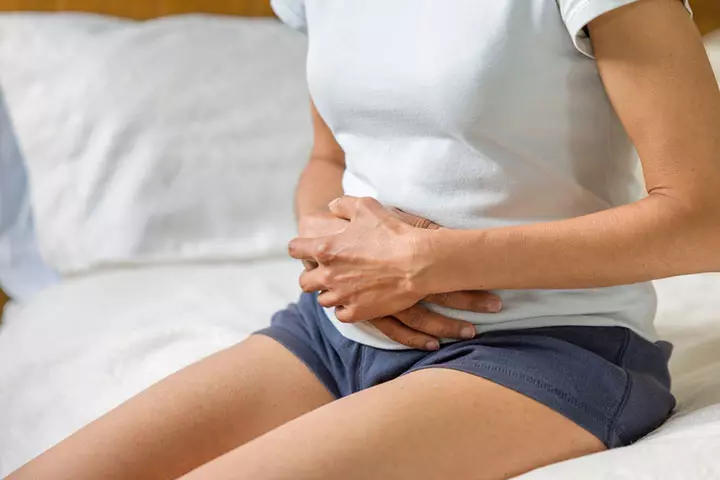
- Mild or light spotting
- Rise of basal body temperature
- Breast tenderness
Understanding ovulation symptoms is essential for women who want to conceive. By recognizing these signs, you can pinpoint your most fertile days and plan intercourse accordingly, improving your chances of getting pregnant.
The menstrual cycle also indicates that you are ovulating in a cycle. Usually, failure to ovulate (anovulation) could result in the absence of menstrual periods (amenorrhea) (9).
 Did you know?
Did you know?How Long Do Ovulation Symptoms Last?
Ovulation symptoms can be present before and after ovulation, and they may disappear gradually. Ovulation pain can last from a few minutes to 48 hours before the release of an egg (ovulation). BBT changes are often seen during ovulation (11).
Vaginal discharge (secretions) can change before or after ovulation. This is also called fertility discharge or ovulation discharge. After ovulation, the secretions decrease and get thick and less noticeable (12).
How Can You Know If You’re Not Ovulating?
The main symptom of anovulation is the inability to get pregnant. The absence of menstruation also indicates that a woman is not ovulating. Irregular menstruation, including a menstrual cycle that is too long (35 days or more) or too short (less than 21 days), can also be a sign of anovulation (13).
There are no other specific signs and symptoms to indicate that a woman is not ovulating. Although ovulation signs are present, they may not be noticeable in all women.
If you think you’re not ovulating, it’s important to see a healthcare provider. They can run tests to identify any issues that might be affecting your fertility and guide you on the best steps to improve your chances of conceiving.
What Are The Factors Preventing Ovulation?
Failure to ovulate is the common cause of female infertility. Nearly 40% of women with infertility problems have ovulation issues. The following factors may prevent ovulation (14):
- Lifestyle and environmental factors such as obesity, overweight, underweight, and excessive exercise are linked to ovarian dysfunction and infertility. Substance use such as marijuana, drugs (cocaine, heroin), tobacco, and heavy drinking may also affect ovarian function negatively. Certain toxins in the pesticides and treatments such as chemotherapy and radiotherapy also prevent ovulation (15).
- Gynecological and ovarian conditions play a significant role in causing ovulation difficulties, with polycystic ovary syndrome (PCOS) and primary ovarian insufficiency (POI) being noteworthy examples. According to a report by CDC, PCOS is one of the most common causes of female infertility, affecting 6% to 12% (as many as 5 million) of US women of reproductive age. Excess of fast-burning sugars and lipids can disturb your ovulation by increasing your weight and the insulin resistance of your metabolism linked to PCOS.
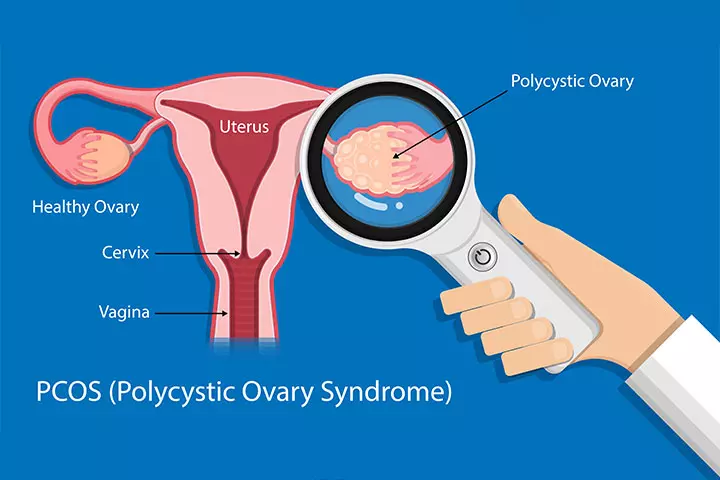
- Endocrine disorders such as hypothalamus and pituitary problems affect the reproductive hormones. Thyroid diseases and problems can also impact ovarian function. Too many or too few hormones or groups of hormones can affect the normal functioning of the ovaries.
- Aging can be a cause of decreased fertility due to diminished ovarian reserve. This means that a low number of eggs are present in the ovaries as age advances.
- Stress may hinder ovulation, as research shows that women with high levels of alpha-amylase, a marker of stress, are less likely to conceive during their fertile window, even when other factors are controlled (16).
Frequently Asked Questions
1. How do I know when ovulation is over?
You may know that your ovulation is over by looking at the changes in the mucus. After ovulation, your vaginal secretion will either become thick and cloudy or disappear completely (17).
2. Can I ovulate more than once per cycle?
Conventionally, it was believed that women ovulate only once per cycle. However, one Canadian research on 63 women with regular menstrual cycles showed they ovulate twice or thrice in a cycle (18).
3. Is it possible for ovulation to last longer than usual?
Ovulation usually happens once during a menstrual cycle and lasts up to 24 hours. Menstrual cycles can, however, vary, and ovulation might be delayed or irregular (19).
4. How long should couples have sex during ovulation to increase their chances of conception?
No set amount of time guarantees conception during ovulation. Couples should have unprotected intercourse three days before ovulation and on the day of ovulation to maximize the chances of conception (20).
5. How do hormonal contraceptives affect ovulation?
Hormonal contraceptives, such as birth control pills, effectively prevent ovulation by suppressing the release of eggs. Additionally, these contraceptives alter the cervical mucus, making it more difficult for sperm to reach and fertilize an egg (21).
6. How can technology help track ovulation, and what are the best tools?
Technology has made it easier to track ovulation with accuracy. Apps can help you record symptoms, track basal body temperature, and note changes in cervical mucus to identify your fertile window. Wearable devices like smartwatches and fertility trackers also provide helpful data for monitoring ovulation.
Knowing how long ovulation lasts could help you plan pregnancy at the right time. Tracking ovulation time and fertile days can increase your chances of conception. This may also help you identify and treat ovulatory problems if required. However, to know your approximate days of ovulation, you may keep track of ovulation and menstrual cycle for a few months. This may also help you differentiate ovulation signs. You may consult a gynecologist or fertility specialist if the menstruation is irregular or absent or you are unable to get pregnant after trying for a few months.
Infographic: What Are The Signs Of Ovulation?
Ovulation days are the most fertile days when the chances of getting pregnant are the highest. While several apps and tools are available to track the ovulation date automatically, if you’re still confused, check out our infographic below to learn about potential signs of ovulation.
Some thing wrong with infographic shortcode. please verify shortcode syntax
Illustration: How Long Does Ovulation Last? Duration And Symptoms
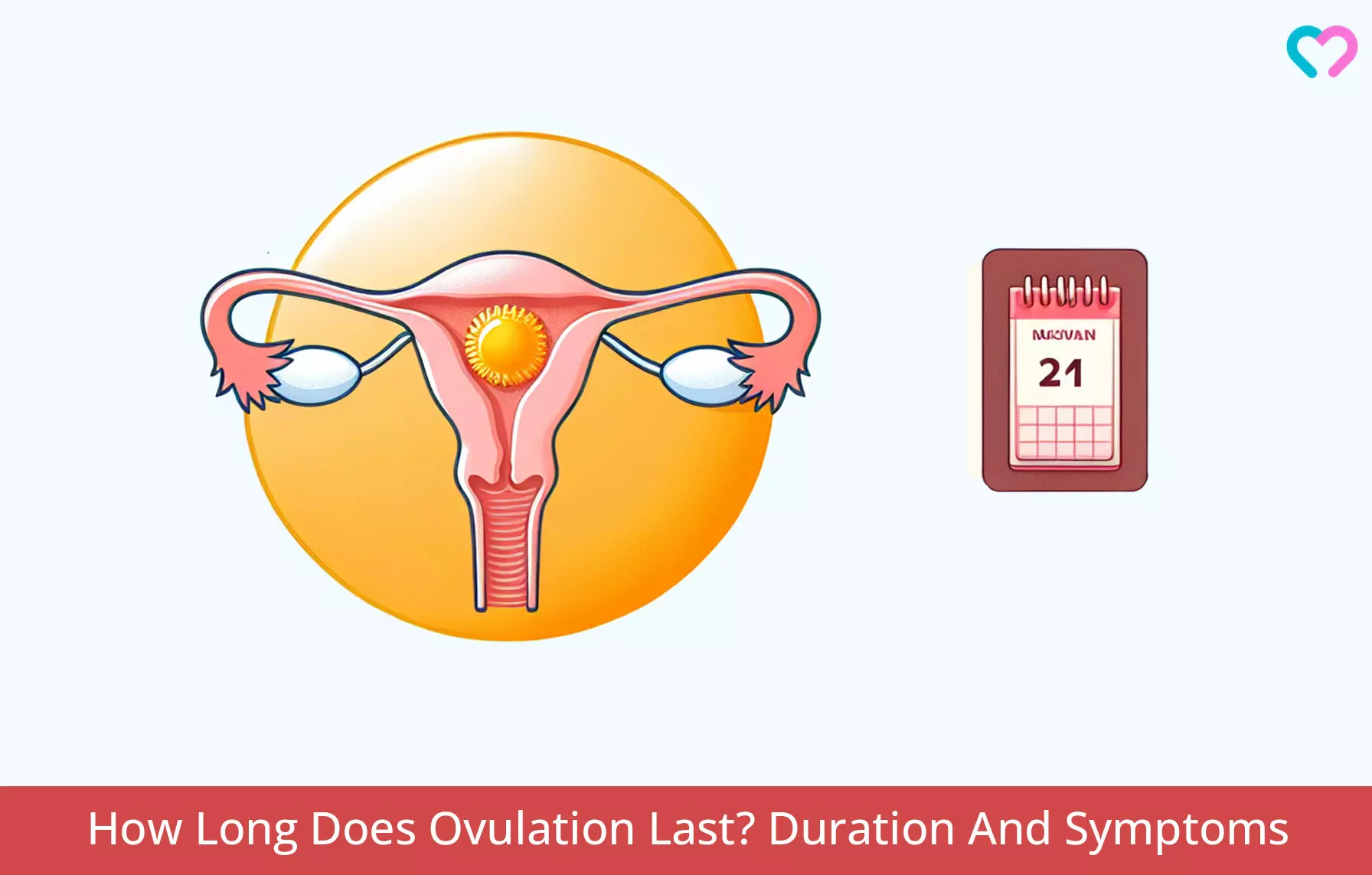
Image: Dall·E/MomJunction Design Team
Learn the science behind calculating ovulation, unlocking the prime window for conception. This informative video will help you understand biological cues and methods to maximize the chances of getting pregnant naturally.
References
- Pregnancy: Ovulation Conception & Getting Pregnant
https://my.clevelandclinic.org/health/articles/11585-conception - Advice on conceiving and preparing for pregnancy
https://www.nidirect.gov.uk/articles/advice-conceiving-and-preparing-pregnancy - Pregnancy – identifying fertile days
https://medlineplus.gov/ency/article/007015.htm - Conception: How it Works
https://crh.ucsf.edu/about-fertility/conception - When are you more likely to conceive?
https://www.yourfertility.org.au/everyone/timing - Ovulation Calculator
https://www.ivf.com.au/planning-for-pregnancy/how-to-get-pregnant/ovulation-calculator - Am I Ovulating?
https://www.reproductivefacts.org/news-and-publications/patient-fact-sheets-and-booklets/documents/fact-sheets-and-info-booklets/am-i-ovulating/ - Ovulation: Achieve and Conceive?
https://winchesterhospital.org/health-library/article?id=21221 - Ovulation
https://www.betterhealth.vic.gov.au/health/conditionsandtreatments/ovulation - Ovulation: When Is The Best Time To Get Pregnant?
https://healthcare.utah.edu/fertility/patient-education/ovulation - Ovulation Pain
https://www.betterhealth.vic.gov.au/health/conditionsandtreatments/ovulation-pain - How to get pregnant
https://www.stclair.org/services/mayo-clinic-health-information/article/ART-20047611/ - Female Infertility
https://www.stclair.org/services/mayo-clinic-health-information/diseases-and-conditions/CON-20198834/ - What are some possible causes of female infertility?
https://www.nichd.nih.gov/health/topics/infertility/conditioninfo/causes/causes-female - What lifestyle and environmental factors may be involved with infertility in females and males?
https://www.nichd.nih.gov/health/topics/infertility/conditioninfo/causes/lifestyle - NIH study indicates stress may delay women getting pregnant.
https://www.nih.gov/news-events/news-releases/nih-study-indicates-stress-may-delay-women-getting-pregnant - Ovulation signs
https://www.pregnancybirthbaby.org.au/ovulation-and-fertility - Owen Dyer (2003) Women may ovulate two or three times a month
https://www.ncbi.nlm.nih.gov/pmc/articles/PMC1126506/ - Ovulation and fertility
https://www.betterhealth.vic.gov.au/health/conditionsandtreatments/ovulation#when-does-ovulation-happen - Right time for sex
https://www.yourfertility.org.au/everyone/timing - Do I ovulate while taking birth control pills?
https://www.plannedparenthood.org/blog/do-i-ovulate-while-taking-birth-control-pills#:~:text=The%20hormones%20found%20in%20the - Zoey N. Pascual and Michelle D. Langaker; Physiology, Pregnancy.
https://www.ncbi.nlm.nih.gov/books/NBK559304/ - Johnson S et al., (2018); Can apps and calendar methods predict ovulation with accuracy?
https://pubmed.ncbi.nlm.nih.gov/29749274/ - Nathan R. Brott and Jacqueline K. Le; Mittelschmerz.
https://www.ncbi.nlm.nih.gov/books/NBK549822/
Community Experiences
Join the conversation and become a part of our nurturing community! Share your stories, experiences, and insights to connect with fellow parents.
Read full bio of Dr. Ben Abbes Taarji Hicham
Read full bio of Dr Bisny T. Joseph
Read full bio of Rebecca Malachi
Read full bio of Reshmi Das









